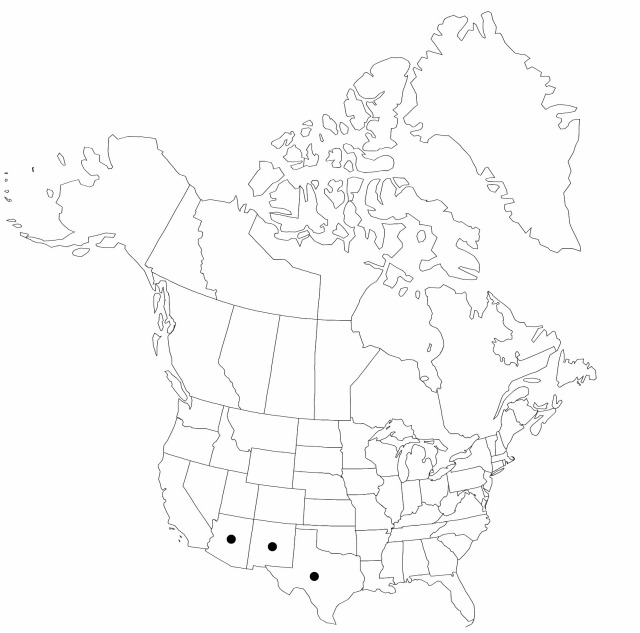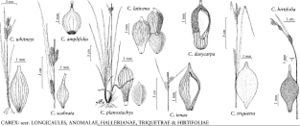Difference between revisions of "Carex lativena"
Sida 15: 510, figs. 1, 2C, 5A. 1993.
FNA>Volume Importer |
FNA>Volume Importer |
||
| Line 34: | Line 34: | ||
-->{{#Taxon: | -->{{#Taxon: | ||
name=Carex lativena | name=Carex lativena | ||
| − | |||
|authority=S. D. Jones & G. D. Jones | |authority=S. D. Jones & G. D. Jones | ||
|rank=species | |rank=species | ||
| Line 49: | Line 48: | ||
|publication year=1993 | |publication year=1993 | ||
|special status= | |special status= | ||
| − | |source xml=https://jpend@bitbucket.org/aafc-mbb/fna-data-curation.git/src/ | + | |source xml=https://jpend@bitbucket.org/aafc-mbb/fna-data-curation.git/src/f50eec43f223ca0e34566be0b046453a0960e173/coarse_grained_fna_xml/V23/V23_905.xml |
|genus=Carex | |genus=Carex | ||
|section=Carex sect. Hallerianae | |section=Carex sect. Hallerianae | ||
Revision as of 20:12, 16 December 2019
Plants densely cespitose; rhizomes stout. Culms up to 12 cm, scabrous. Leaf blades V-shaped in cross section when young, (0.5–) 1.2–2 mm wide, papillose, scabrous. Inflorescences: proximal bracts usually with sheath 2.5–3 mm; lateral spikes usually 1–2 distal, 2–3 basal, 3–7 × 4 mm; terminal spike staminate or gynecandrous, 7–8 × 1.5–2 mm. Pistillate scales 3–5(–10)-veined, obovate, 3.5–4.2 × 1.3–2 mm, proximal ones longer than perigynia, apex subobtuse to acuminate and often mucronate. Staminate scales 5-veined or more, 4–5 × 1.5–2.1 mm. Perigynia 15–27-veined, most veins on faces 0.1 mm wide or wider, about as wide as marginal veins, obovoid, 3–4 × (1.1–)1.4–1.9(–2.1) mm, glabrous proximally, hispidulous distally; beak distinct, abruptly bent, 0.1–0.5 mm. Achenes sessile, with 2 faces convex, 2–2.4 × (1.1–)1.4–1.9 mm, apex retuse.
Phenology: Fruiting late spring.
Habitat: Dry to dry-mesic mixed woodlands
Elevation: 700–1800 m
Distribution

Ariz., N.Mex., Tex.
Discussion
Of conservation concern.
Carex lativena was previously included in C. planostachys. These taxa are essentially vicariant species; their ranges overlap in central Texas where apparent intermediates occur.
Carex lativena has been confused with 427. C. geophila (C. sect. Acrocystis), immature specimens of these species are difficult to distinguish.
Selected References
None.
